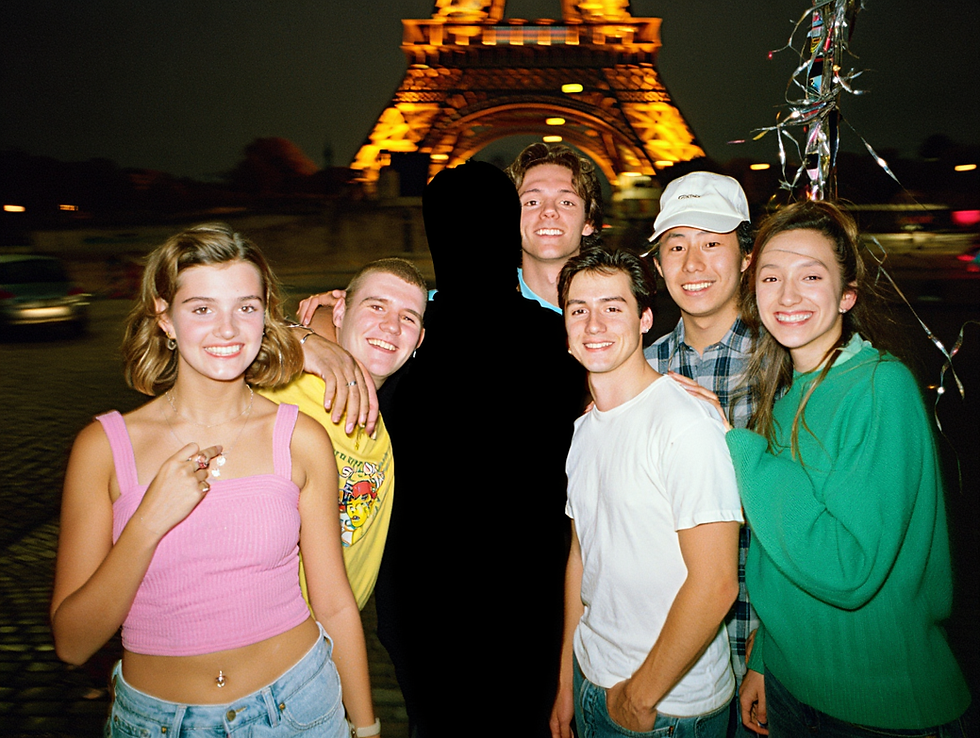Fragmented of the Past: Thinking Through Déjà Vu
- Shahab Nn
- Sep 18
- 2 min read
In my last post, I mapped out different faces of alienation. This time, I want to shift to another thread that kept tugging at me during the process: the feeling of déjà vu.
Déjà vu is strange. It’s that fleeting moment when the present feels like a memory, as if you’ve already lived it. Psychologists describe it as a kind of glitch in the brain’s memory system, but for me it resonates on a more emotional level. It’s unsettling and familiar at once, like standing in two times at the same moment.
That feeling became important for the project because it mirrors how I experience AI images. Sometimes they feel uncannily familiar, like they’re drawn from memories I don’t actually have. A kind of recognition without origin. A tension between intimacy and estrangement.
The Graduation Void
Sometimes déjà vu feels like a memory you can almost claim, but can’t quite. I imagined a graduation party in 2000: friends smiling, balloons, warm disposable-camera tones. And right in the middle, a human-shaped void, a presence defined by absence. For me, this is déjà vu in visual form: familiar yet fractured, intimate yet broken.
Example Prompt A nostalgic disposable-camera style photo of a graduation party in 2000. Six friends pose in caps and gowns with festive balloons and banners in the background. At the center of the group, one figure is missing, replaced by a black human-shaped void of light, creating an eerie absence in the middle of celebration. The image has warm amber tones, visible grain, lens distortion, and slight motion blur, capturing the early-2000s atmosphere.
some more examples :



Memories of Places We Were Never In
Other times déjà vu is less about our own past, and more about lives we never lived. I created a series of images where groups of friends pose in iconic places, Paris, London, New Year’s Eve parties, birthdays, always with one missing figure. The photos feel instantly familiar: the fashion, the blur of a cheap early-2000s camera, the casual smiles. And yet they’re not our memories. They’re fragments of places we never stood, times we never lived, but still recognize.
Example Prompt (Eiffel Tower) A selfie-style photo taken in front of the Eiffel Tower in the early 2000s. A group of friends pose casually, dressed in Y2K fashion, crop tops, denim jackets, low-rise jeans. One spot in the lineup is empty, as if a friend is missing. The photo has pixelation, lens distortion, motion blur, and warm nostalgic tones, resembling an old mobile phone snapshot. Render in 4:3 aspect ratio.
Some more examples:




Where This Leaves Me
Working with these images made me realize that déjà vu is not only about reliving the past, it’s also about imagining the lives we never had. The streets we didn’t walk, the faces we never met, the memories that don’t belong to us but somehow feel like they do. These fragments unsettle because they are both ours and not ours. And maybe that’s exactly where their power lies.



Comments